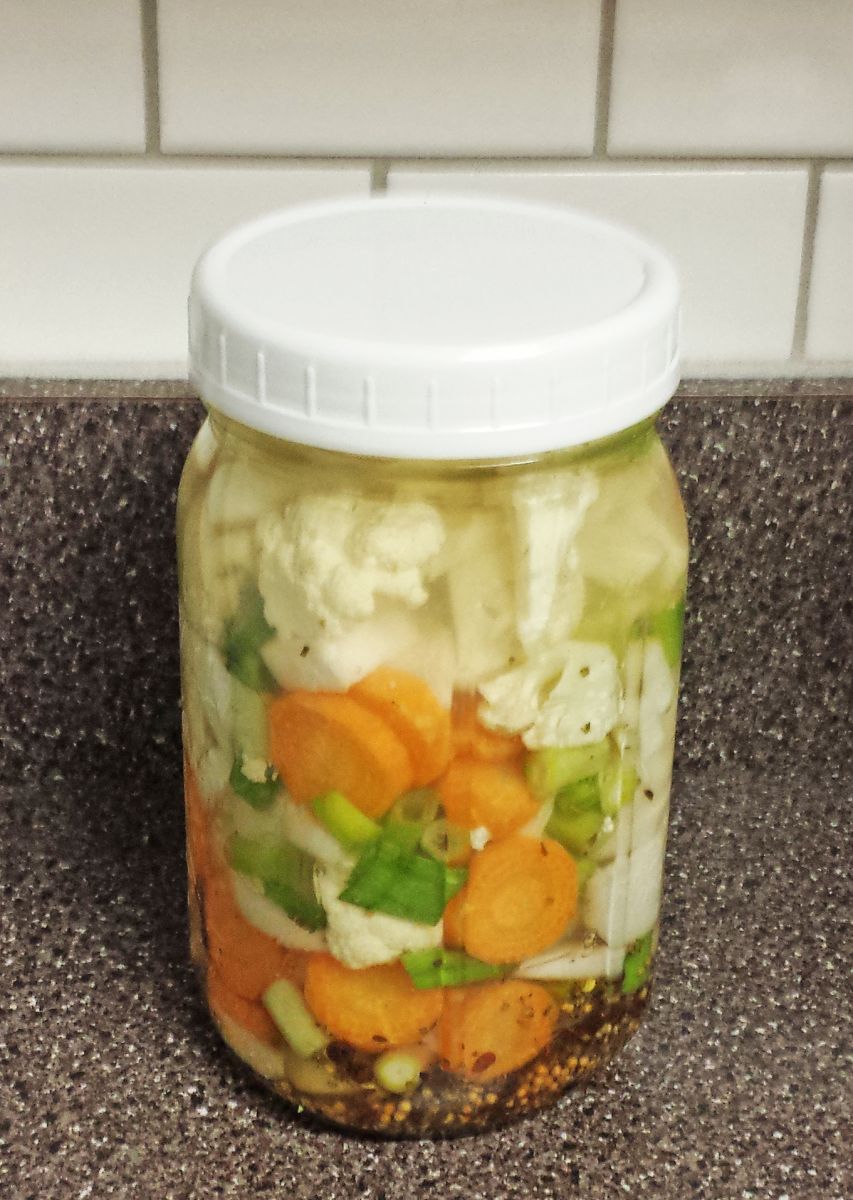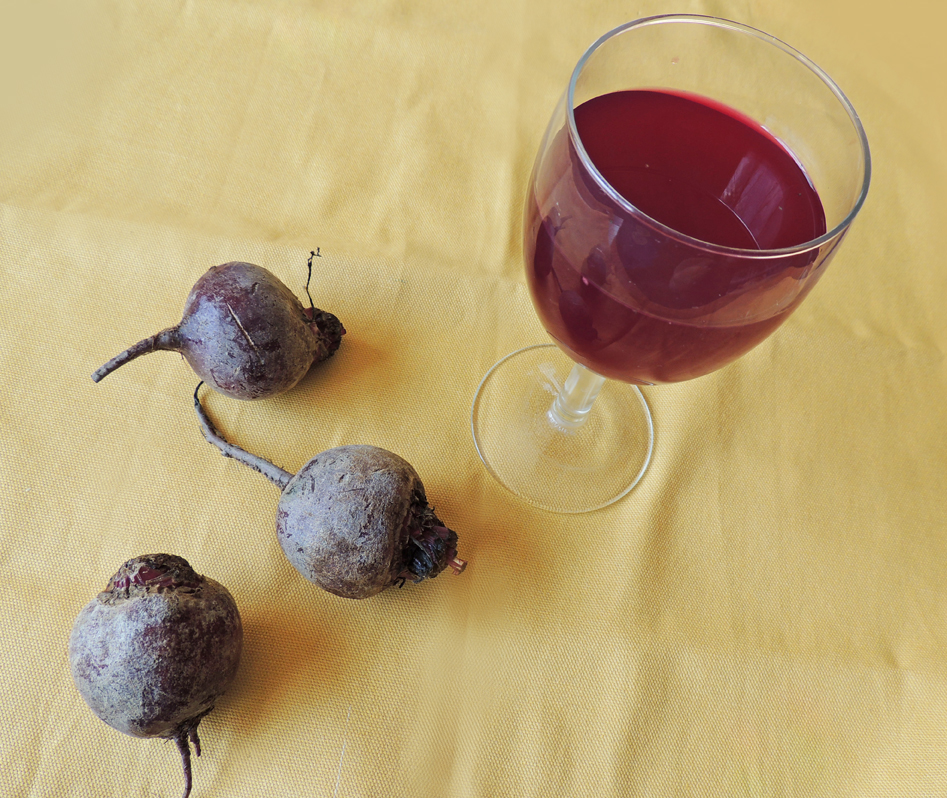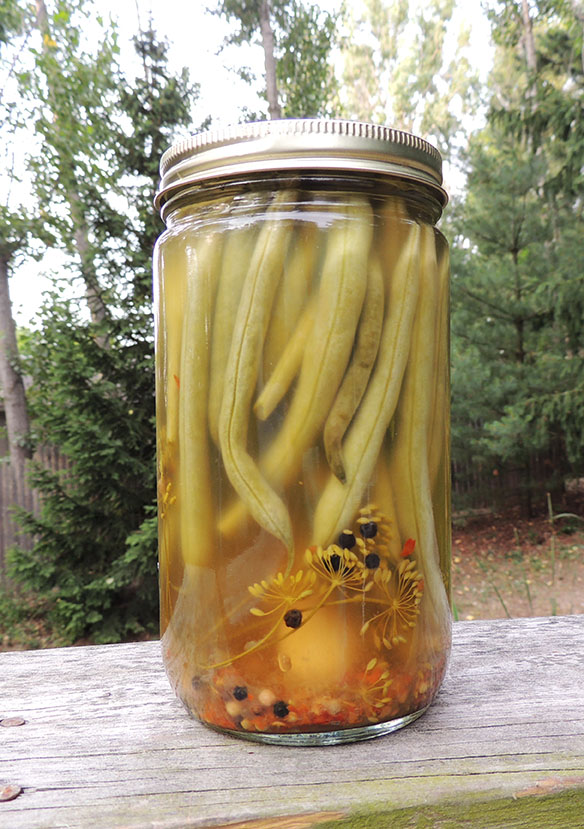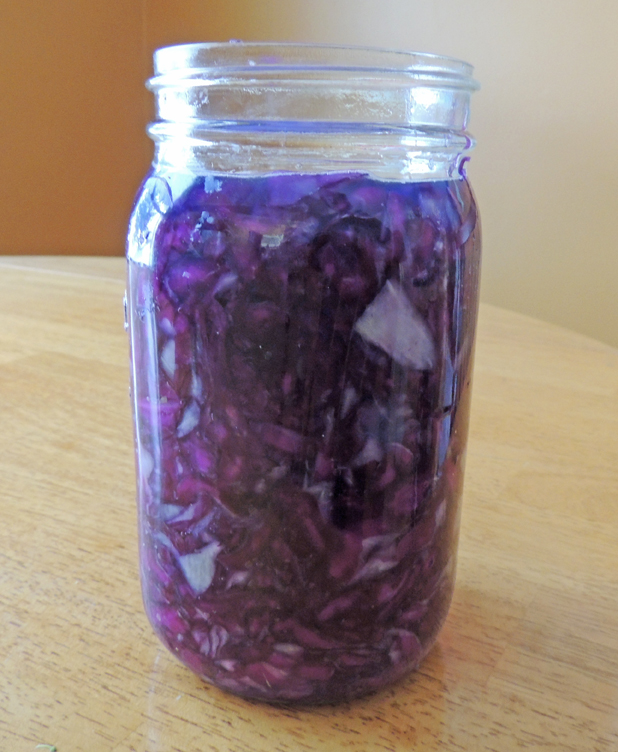Cultures and Ferments
Cultured or fermented foods not only taste great, they are incredibly good for your overall gut health. Fermented foods are rich in beneficial bacteria and help improve digestion. It’s now becoming widely understood that 80% of your immune system actually lives in your gut, which is why it’s so important to take care of your beneficial bacteria.
Oryana carries a wide variety of delicious cultured vegetables such as sauerkraut and kimchi, as well as probiotic-rich products like kefir. But did you know that vegetables are easy to ferment yourself at home? (You can even ferment hard boiled eggs!) We have starter cultures you can purchase but some recipes do not require starters. Just good quality sea salt and filtered water is all you need, and nature performs all the magic with your fresh ingredients. Check out the following recipes for cultured foods that you can try at home.
 “Pickled” Eggs
“Pickled” Eggs
From The Complete Idiot’s Guide to Fermenting Foods
10 hard-boiled eggs, cooled and peeled
1/4 small red onion, thinly sliced
3 cloves garlic, crushed or coarsely chopped
1/2 teaspoon black pepper
1/4 teaspoon red pepper flakes
1/2 teaspoon dill seed
1/2 teaspoon mustard powder
1/2 teaspoon turmeric
1 bay leaf
1/4 cup whey*
1 cup brine (2 teaspoons sea salt to 1 cup water) or more as needed
- In a wide-mouth quart jar, put eggs, onion, garlic, black pepper, red pepper, dill seed, mustard powder, turmeric, bay leaf, and whey. Pour brine to cover up to 1″ from rim of the jar. Make sure eggs are submerged under liquid, use fewer eggs if necessary. Close lid tightly.
- Leave at room temperature for 2-3 days. Transfer to cool storage. Will keep for several weeks.
- These eggs will be bright yellow! You can ferment eggs in left-over juice from another ferment too. For blue eggs, use juice from fermenting red cabbage. For pink eggs, use beet kvass. Kids love the colors!
*You can use whey from yogurt. Just pour off the liquid from a new container of yogurt. You can also use Caldwell’s or other brand culture starter. Or use some liquid from another ferment such as sauerkraut.
Cultured Red Cabbage with Onion (Sauerkraut)
 Cultured Vegetable Medley
Cultured Vegetable Medley
From thankyourbody.com
3 cups fresh, organic vegetables (try cauliflower, carrots, bell peppers, celery)
2 or 3 cloves organic garlic, crushed
1 or 2 small hot peppers (optional)
1 tablespoon organic pickling spice (optional)
1 or 2 sprigs organic dill (optional)
2 grape or bay leaves
1 1/2 to 2 cups chlorine-free filtered water
1 tablespoon sea salt
cabbage leaves to cover
- Wash, trim and chop the vegetables into bite-sized pieces.
- Stir and dissolve the salt into the water.
- Pack the vegetables, garlic, spices (if using) and 1 torn grape or bay leaf tightly into a clean jar. Carefully pour the brine over the vegetables, leaving 1 inch space at the top. Tuck a cabbage leaf over the vegetables to keep them submerged in the brine, then screw a lid onto the jar.
- Set the jar away from direct sunlight in your kitchen, in a place where it will stay room temperature (it’s best between 65 and 80 degrees). Let the vegetables ferment, loosening the jar lids once a day to allow gas to escape and check to ensure that the vegetable are staying submerged in the brine. After 3 days, check to see if they taste sour enough for you…allow them to ferment for up to a week.
- When the vegetables reach the desired flavor, cap them tightly and store them in a cool place (the fridge or a very cool area in the basement or garage). Once they are cool, the fermentation will stop and they’ll keep for up to 8 months.
- Makes one quart of vegetables, adjust recipe for the number of quarts you’d like to make. Remember that the time to ferment depends on the temperature and other conditions in your home (like drafts) and your personal preference for how tangy you like your vegetables. You will need to do taste tests with a clean fork to determine when they are fermented to your liking.
 Beet Kvass
Beet Kvass
Kvass is an excellent probiotic-rich health tonic and is great for digestion.
2 medium beets, washed well
1/4 cup whey* (optional)
2 teaspoons sea salt (4 teaspoons if omitting whey)
2 quarts filtered water
Cut beets into half inch chunks and place in half-gallon jar or divide between 2 quart jars. Add whey and salt, and fill with water until 1 inch from top of jar. Cover and allow to sit at room temperature for 1 week. Check periodically and skim off any whitish “scum.” Transfer to refrigerator.
When most of the liquid has been consumed you can refill the jar and allow to culture at room temperature again for a second, weaker batch. You can then save the beets to add to salads.
*You can make your own whey by draining plain yogurt in a cheescloth-lined colander. The resulting liquid is whey that can be used for making all kinds of cultured vegetables.
 Cultured Green Beans
Cultured Green Beans
From culturesforhealth.com
1 pound green beans, trimmed
1 teaspoon red pepper flakes, or to taste
4 garlic cloves, peeled and smashed
1/2 teaspoon black peppercorns
2 flowering heads dill or handful fresh dill sprigs
Water and sea salt for brine
1 quart jar
- Make a brine with a ratio of 2 tablespoons sea salt to 1 quart filtered water.
- Add the red pepper flakes, garlic cloves, peppercorns, and dill to jar.
- Place the green beans on top of the seasonings, straight up if they are long and thin or sideways if thicker and cut into chunks. Pack them in as tightly as you can. Cover completely with brine solution.
- Cover with a lid and allow to ferment on your kitchen counter at 60° to 80°F for 3 to 10 days, tasting to determine when it has fermented to your taste. (It will get tangier as it ferments.) Check frequently to make sure all the beans are submerged.
- Transfer to refrigerator.
